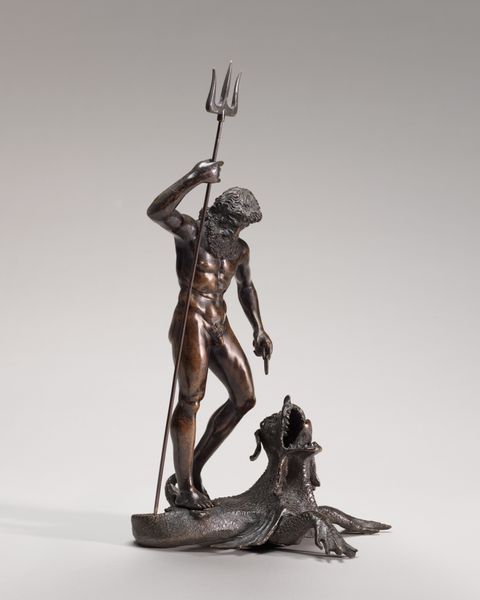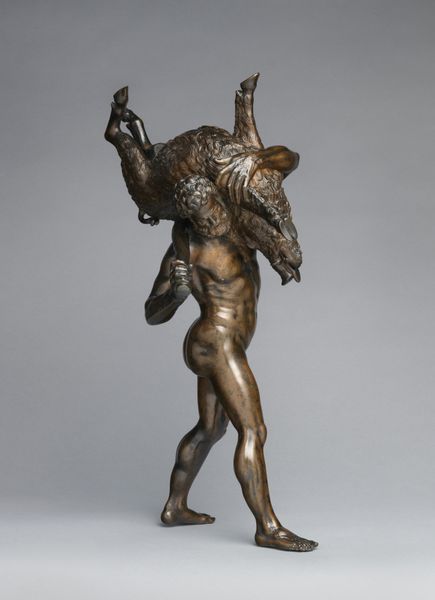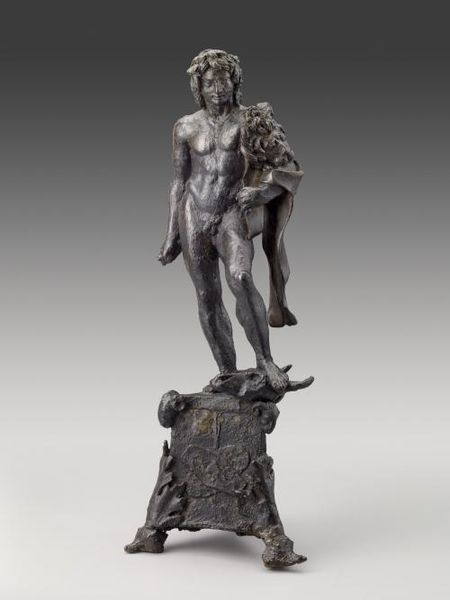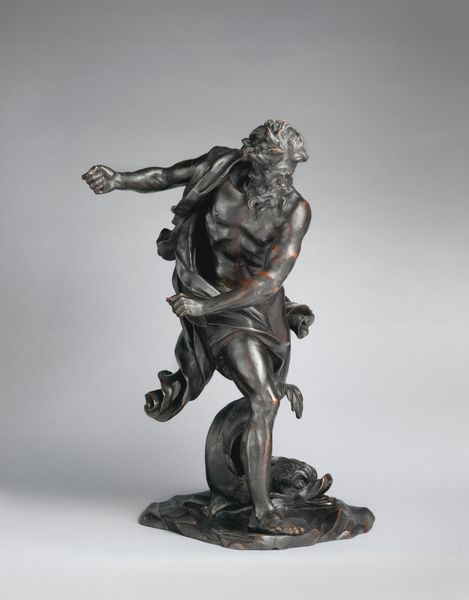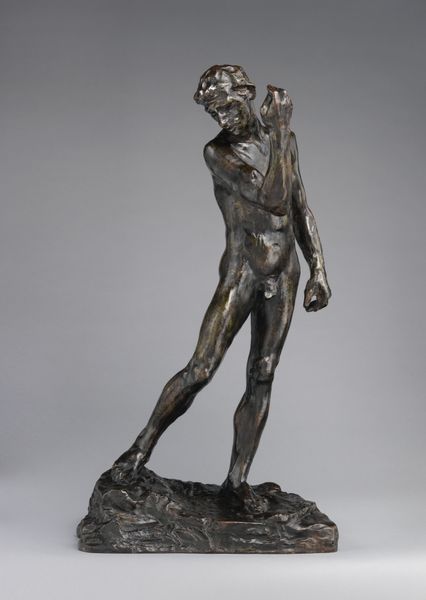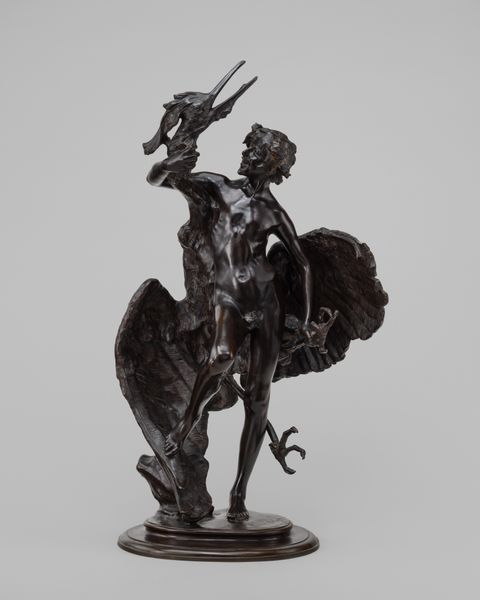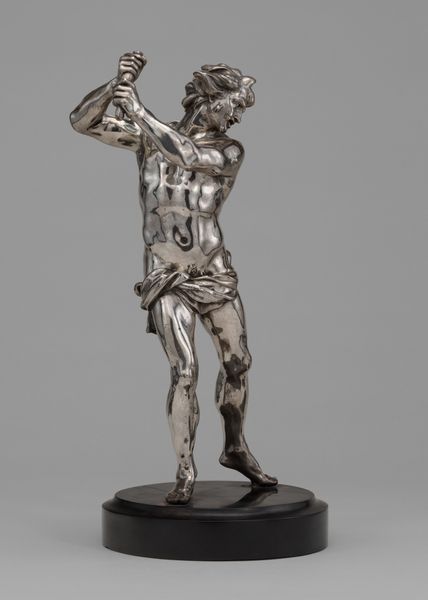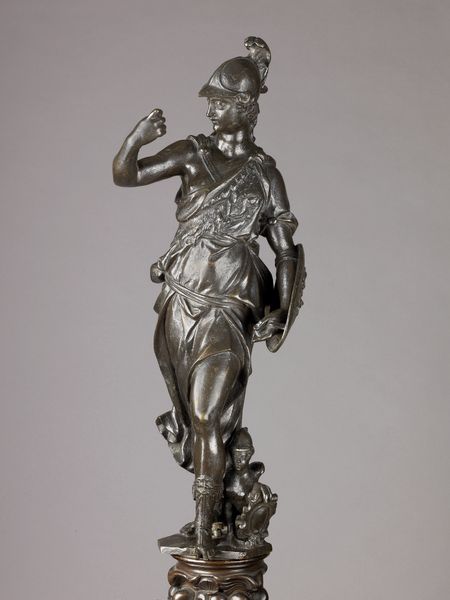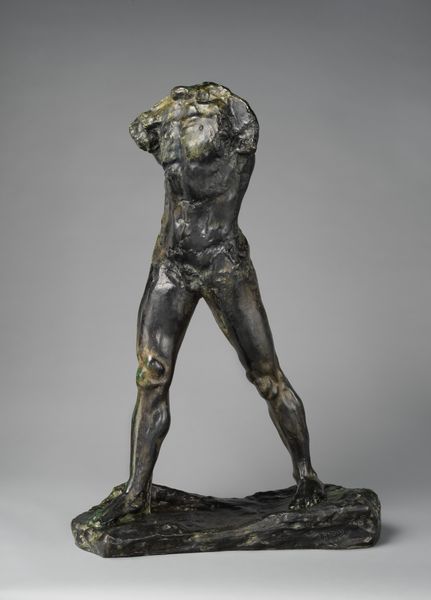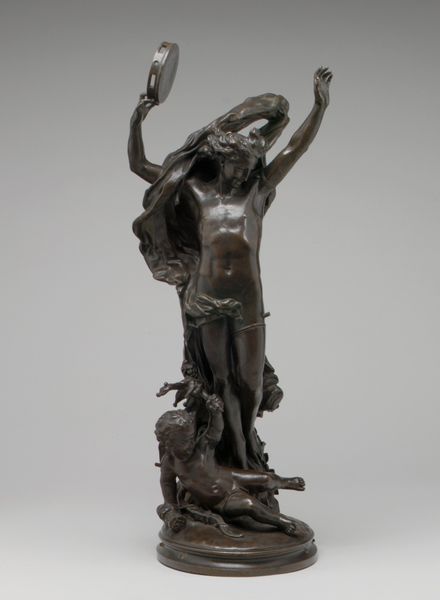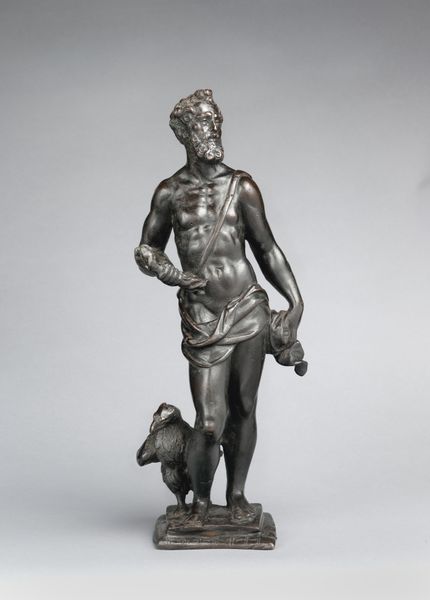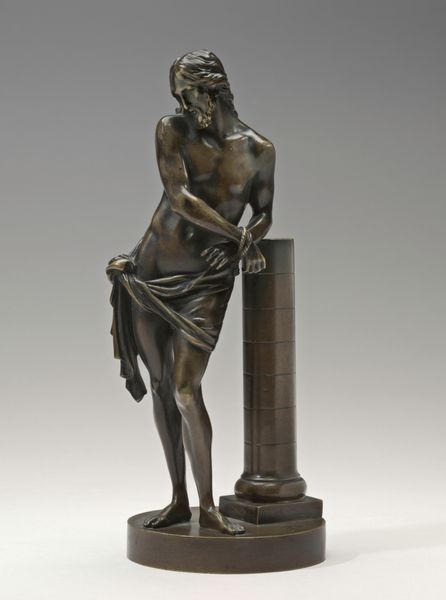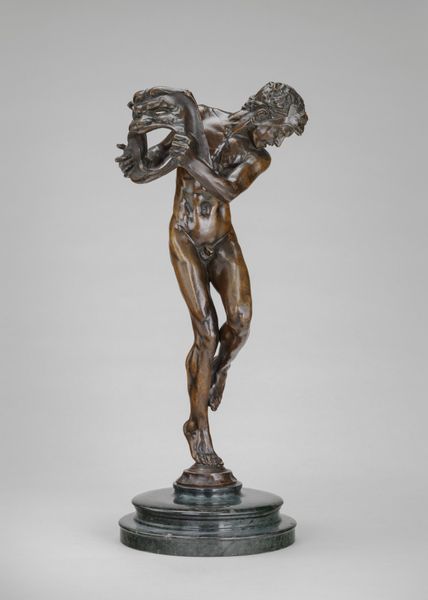
bronze, sculpture
#
sculpture
#
bronze
#
figuration
#
sculpture
#
genre-painting
#
academic-art
#
realism
Dimensions: height 70 cm, height 110 cm, width 55 cm, depth 53 cm, weight 30 kg
Copyright: Rijks Museum: Open Domain
Editor: So, this is Paul Romain Chevre’s bronze sculpture, "Knaap met twee vechtende hanen," likely created sometime between 1850 and 1950. There's such tension captured in the boy’s stance as he holds the fighting birds. How would you interpret the cultural significance of such a scene? Curator: This sculpture speaks volumes about the social function of art and the role of museums in perpetuating certain ideals. Notice how it depicts a rather idealized view of rural life and youth. In its time, genre paintings, and by extension sculptures, served to romanticize particular class dynamics, especially through the lens of entertainment, even when depicting blood sport. Editor: Interesting, I hadn’t thought about it as promoting specific social class ideals. The artist is seemingly celebrating youthful masculinity, but is there a commentary about cruelty embedded in this depiction? Curator: Precisely. Consider how art institutions like museums historically collected and displayed pieces that reinforced particular societal norms, and perhaps even sanitized more violent elements of everyday life. The display of such works often glosses over deeper societal issues, instead projecting a sense of idealized past. The very act of displaying this in a museum says something, doesn’t it? Who gets to decide which narratives are celebrated, and why? Editor: That’s fascinating. So even this seemingly simple, realistically rendered sculpture of a boy with fighting cocks participates in broader social conversations about class and societal expectations. Curator: Exactly. Thinking about how artworks like this operate within the museum context helps us question the very stories we tell about ourselves through art. Editor: I learned to look for the broader implications beyond the subject-matter in evaluating artwork’s cultural role, thank you. Curator: My pleasure, It helps highlight how historical forces continually shape our understanding.
Comments
No comments
Be the first to comment and join the conversation on the ultimate creative platform.

